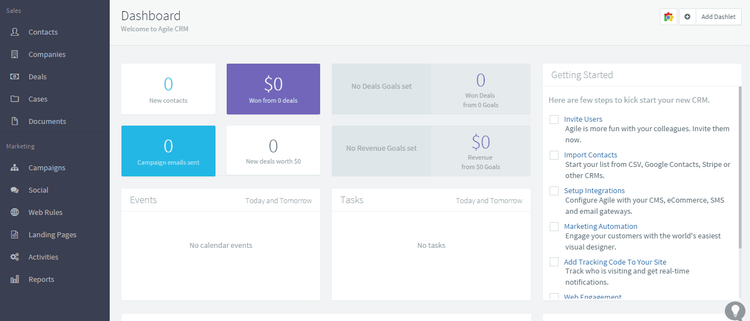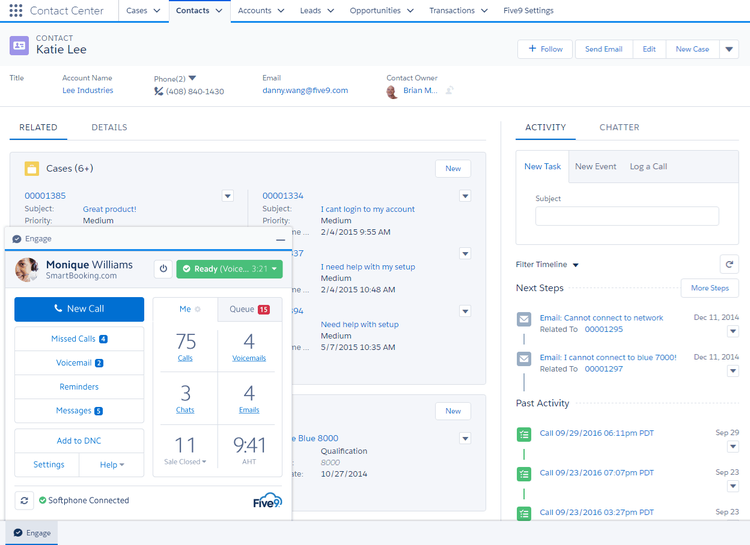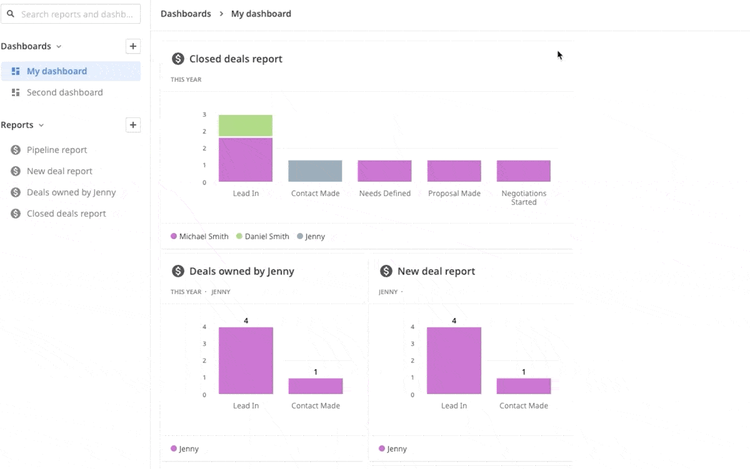Even professionals with the best sales techniques often falter when it comes to selling real estate. It takes a highly personal touch to make it in this business at every stage of the sales cycle.
Finding real estate leads presents its own set of challenges, and all the sales tips in the world can't help you close deals if you don't have good real estate lead sources. However, if you know which marketing channels to use, you can create a constant pipeline of fresh prospects.
To do that, you've got to implement a few tried-and-true strategies on how to generate leads in real estate.
Considerations for real estate lead generation
Finding the best real estate lead generation ideas is a challenging prospect, even for veteran real estate professionals, and before we jump into the seven strategies that can make you more effective at it, you need to keep a couple of things in mind about the business.
Real estate sales are different
Generating leads for real estate is a lot different than it is for other industries. You have to be a lot more focused on relationships, personal contact, and face-to-face meetings -- unlike some businesses that can spend all their time online.
Efficiency is key
It's so easy to waste time on unproductive activities as a real estate agent. You need to balance online activities, phone calls, and physically visiting homes. It's vital that you look for ways to improve your efficiency in terms of how you generate leads, because your time is precious.
Our favorite strategies for acquiring real estate leads
There are a lot of ideas regarding the best way to get real estate leads, but these seven strategies are key to creating a comprehensive plan for getting leads for realtors.
1. Network, network, network
There’s simply no getting around it: If you’re in real estate, you have to network like crazy. Talk to neighbors, check in with the chamber of commerce to find out what events are going on, volunteer with local charities, send networking emails, or just pick up the phone and dial prospects.
And don’t forget to talk to the people you already know. You have built many years of trust with family and friends, so it’s OK to ask them first if anyone’s in the market for a home. They’ll want to deal with someone they already know and trust, which makes you perfect for the job.
How to put networking into action:
Networking is all about establishing that personal connection with a potential client. Here’s a couple ways to make sure you form relationships rather than simply meet people.
- Have a professional website: There's no bigger turnoff for a client than when they go to your website after meeting you and find a barebones webpage. Your real estate website serves as the face of your brand, so make it look professional.
- Be engaged in the community: It's not good enough to just go to conferences, where you're more likely to meet colleagues than buyers. You need to get out in the community by going to small business events, volunteering with local groups and organizations, and even going to career days at local schools.
2. Ask for referrals
Referrals are gold in real estate. Unlike when you’re cold calling and people don’t know who you are and may even be annoyed at being contacted, a referral gives you an immediate "in" with a prospect, which saves you a lot of time contacting cold leads and working them through the sales funnel. Be aggressive -- but polite and respectful -- when asking for referrals. Make it a habit to ask each client for one or two.
And when you do get a referral, do not forget to send a handwritten thank-you note to the person who referred you. This will build a positive relationship with an individual who may have more referrals to provide in the future.
How to put asking for referrals into action:
Referrals can be a bit tricky, but there’s a couple of things you can do right now to increase the rate at which you get them.
- Just ask: A lot of real estate salespeople hope that people will simply offer up a referral, but that's not how it works. Ask politely for a referral when you've made a sale, and more than likely your client will be glad to oblige.
- Offer incentives: It's OK to have a little quid pro quo when it comes to getting referrals. Offer your clients extras like a free video of the house they're trying to sell, for example, in exchange for a referral.
3. Come up with a process
Every salesperson should create and continually tweak a sales process to improve their efficiency. You should have a plan that lays out a strategy for when you should make cold calls, what your referral process is, and how you go out and find new leads.
To do that, it helps to first crunch the data you already have to create a customer profile. Where do you find them (social media, referrals, etc.)? What are their demographics? Are they more likely to subscribe to your newsletter? Answering these questions will help you determine how to create an efficient process.
Using this information, create a process that you can follow week-in and week-out, over and over again, and then evaluate it every couple weeks or so to determine if it needs to be tweaked to incorporate new strategies or eliminate activities that aren't bringing in value.
How to put coming up with a process into action:
A sales process may be the key to getting your business to the next level, so it’s wise to set aside a few hours to set one up.
- Start collecting data: If you aren’t already collecting data, you need to start. Keep track of every data point you can think of that might be useful, such as demographics of the buyer, home sale price, neighborhood, referral source, and so on.
- Use real estate email marketing software: Create email templates with software that will allow you to conduct an automated drip campaign, so that you can reach out and contact warm leads without having to lift a finger.
4. Use social media
Yes, everyone says to use social media in marketing. But you can be forgiven for being frustrated by this medium. After all, not everyone has thousands of followers.
The power of social media for you as a real estate salesperson is your ability to share eye-popping features in homes on the market that people who like browsing for their dream home will share.
Social media is also a good way to find people to interact with in your market area. You could reply to people's posts with helpful information or point them to a home that could be of interest -- just don't be too sales-y about it.
How to put using social media into action:
Social media can be a powerful tool, or it can be a waste of time, depending on how you use it. Here are a couple of ways to make sure you get something out of it.
- Choose your platforms wisely: Generally, you're going to want to focus on LinkedIn, Instagram, Twitter, and Facebook, but use the data you've been collecting to determine whether one or two of the platforms constitute the bulk of your referrals (and, if so, devote more time to those sites).
- Use advertising: Advertising can help you expand your reach. Use Facebook Ads, for example, to target potential customers with their "Custom Audiences" feature. After a while, evaluate how the campaign is performing, and then evaluate whether you should continue it or devote resources elsewhere.
5. Make videos
If you're like most real estate salespeople, you don't bother with video -- but you should. Offering to create a video of a home is a great way to convince sellers to list with you. And videos do a great job of showcasing a home in a way that photographs can't.
But beyond showing off homes, you can create quick two-minute videos of:
- Home buying and selling tips
- How-to instructions
- Interviews with clients
- Question-and-answer sessions
- Favorite home features
How to put making videos into action:
Videos can be a powerful new sales tool, but it is admittedly a little intimidating for those who aren’t tech-savvy. Here are a few tips to make it a part of your sales process.
- Use a tripod: A tripod will keep your camera from shaking, which will make the video look more professional and the house more appealing.
- Buy good video equipment and lighting: Likewise, if you try to use your phone rather than a good camera and lighting equipment, the professionalism of the video takes a hit.
- Keep the videos short: No one wants to watch a 30-minute tour. Two or three minutes should be plenty of time to show off a house.
6. Create a content marketing campaign
Buyers use the internet to find the home they ultimately purchase a whopping 50% of the time, according to the National Association of Realtors. One of the first things people do when searching for a new home is to hit up a search engine. Wouldn’t it be great if your website was one of the first ones listed?
You can launch your own content marketing campaign to raise your profile in search engines and get more free traffic. You do this by producing quality, keyword-rich content that breaks down subjects of importance to your clients, such as a how-to on applying for a Federal Housing Administration loan or quick-and-dirty tips on listing a house.
How to put content marketing into action:
Content marketing can bring in a lot of organic traffic, and it could end up being a vital new pipeline of leads if you use it right.
- Localize your content: Try to localize the content you create to your geographic area, so you won’t be pulling in traffic that has no ability to do business with you. For example, "5 Steps to Applying for an FHA Loan in Green Bay, WI" has strong potential to rank well in Google in that particular location.
- Create other types of content: You can also create a newsletter or community magazine that could go out to locals, either in email form or via physical copies you could take with you to events.
7. Use CRM software
Customer relationship management (CRM) software can take your business to the next level. This software will help manage your leads in one place, allowing you to see where they stand in the sales cycle so you can send them the right message at the right time, which will improve the overall efficiency of your operation.
However, not all CRM software is created equal, so you need to look for real estate CRM software. You're in a different kind of business when it comes to sales because you are selling a huge, life-changing expenditure and not a can of soda. As a result, you need to look for software that offers three features in particular:
- A robust contacts tool
- Strong customer service
- Powerful email marketing
How to put CRM software into action:
CRM software is good for streamlining your processes and making you a more efficient real estate selling machine.
- Try out a few options first: Not every CRM software option will fit your business or style, so it’s important to give a few options a try before settling on one.
- Ask around: Chances are, your colleagues also use CRM software, so ask them which options appeal most to them, and why.
The best CRMs for real estate lead management
So which CRM should you pick? There are dozens of options to choose from, but remember that not all of them will be optimized for real estate professionals. Here are three options that we feel are best suited to those working in real estate.
1. Agile CRM
Unlike a lot of CRM platforms, Agile CRM actually has a real estate version that is designed for documenting appraisals and property listings, as well as automating administrative tasks.

Agile CRM provides a good top-down look at your current sales pipeline. Image source: Author
2. Salesforce CRM
Salesforce CRM also has functions designed to help real estate salespeople from start to finish. It allows you to easily upload leads and contacts, manage email campaigns, and work from anywhere using the mobile app.

You can see detailed client information with Salesforce’s contacts feature. Image source: Author
3. Pipedrive
You can create "pipelines" for individual properties with Pipedrive, allowing you to monitor the client journey from open house to closing. You can also keep track of any messages you have with clients, and you can take audio notes with your phone as you move between properties.

You can visualize where you stand with your clients with Pipedrive’s dashboard. Image source: Author
It’s time to ask yourself the hard questions
When it comes to real estate leads for realtors, it’s all about having the right process. You may already have a process, but perhaps you find yourself scrambling around everywhere with barely a moment to think.
If so, it’s time to find set aside a few hours and ask yourself some questions. Am I approaching this the right way? Does my process need a complete overhaul? Do I have the necessary data to install the right process?
When you’ve answered these questions, you can begin to put in place a new system that incorporates these seven strategies and will have you on the way to a new pipeline of leads that will take you to the next level.
Our Small Business Expert
We're firm believers in the Golden Rule, which is why editorial opinions are ours alone and have not been previously reviewed, approved, or endorsed by included advertisers. The Ascent does not cover all offers on the market. Editorial content from The Ascent is separate from The Motley Fool editorial content and is created by a different analyst team.